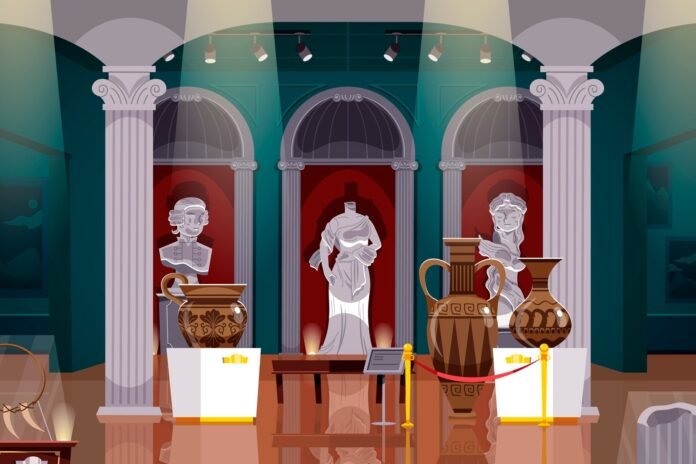Introduction: The world of ancient artz is a fascinating and intricate realm that reveals much about the early cultures of human civilization. It is through art that early societies communicated, expressed beliefs, told stories, and understood the world around them. From cave paintings to sculptures, each piece provides a glimpse into the lives and minds of ancient peoples. In this article, we will explore the significance, forms, and enduring influence of ancient art, showcasing how it laid the groundwork for the art movements that followed.
1. The Origins of Ancient Art
Ancient art can be traced back to the earliest days of human history, where early humans first used their surroundings and natural materials to create symbolic representations. The origin of art is often linked to early human need for survival, communication, and spiritual expression. From the earliest cave paintings discovered in places like Lascaux, France, to the intricate carvings found in Egyptian tombs, ancient art tells the story of human evolution. The first forms of art were often simple and functional, used to depict hunting scenes or religious symbols, but over time, they became more complex, reflecting the development of language, culture, and philosophy.
2. Art as a Spiritual and Cultural Expression
Ancient art often had a deep spiritual and cultural meaning, representing not only the religious beliefs of a civilization but also its social structure, values, and worldview.
3. Materials and Techniques in Ancient Art
The materials used in ancient art were as diverse as the cultures that created them. Early humans made use of what was readily available in their environment, including stone, wood, bone, and clay. The skill and craftsmanship involved in these early works were impressive, considering the limitations of tools and technology at the time. Sculptures and carvings were often made from stone, wood, or metal, while paintings were created using pigments from natural minerals and plants. The ancient Egyptians, for example, developed techniques for creating lasting color in their tomb paintings, while the Greeks mastered the art of bronze casting and marble sculpting. The materials and techniques used not only reflect the artistic capabilities of the time but also reveal the societies’ priorities and available resources.
4. Symbolism and Storytelling in Ancient Art
Storytelling has always been a central aspect of human culture, and ancient art was no exception. Artworks often depicted myths, legends, and historical events, serving as visual narratives for audiences. The ancient Sumerians, for example, created detailed reliefs that told the stories of kings and their conquests, while the Greeks illustrated epic tales from the Iliad and the Odyssey on pottery. Symbolism played a crucial role in these artworks, with objects, colors, and even poses carrying meaning far beyond their immediate appearance. The Egyptians used symbolic colors to represent different elements of life and death, and the Greeks used mythological motifs to represent concepts such as heroism, love, and fate. These visual stories not only provided entertainment and education but also conveyed moral and philosophical lessons.
5. Influence of Ancient Art on Modern Culture
Many modern art movements have drawn inspiration from the forms, techniques, and themes of ancient civilizations. Similarly, the symbolism found in ancient Egyptian and Mesopotamian art continues to inspire contemporary artists and designers. Ancient art has shaped not only how we create but also how we think about culture, beauty, and the human experience.
6. Preserving Ancient Art for Future Generations
The preservation of ancient artz is a vital concern, as many of these masterpieces face threats from time, weather, and human activity. The preservation of artifacts such as cave paintings, sculptures, and pottery is critical to understanding the history and achievements of ancient civilizations. Over the years, advancements in conservation technology and methods have allowed archaeologists and museums to better protect and restore ancient works. However, challenges such as environmental factors, looting, and political unrest continue to pose risks. It is essential that the world recognizes the importance of preserving these relics, as they not only tell the story of humanity’s past but also serve as a reminder of our shared cultural heritage.
Conclusion: Ancient artz is much more than just an aesthetic pursuit; it is a window into the past, offering us valuable insights into the beliefs, lives, and cultures of the early human civilizations. Through the study of ancient art, we gain a deeper understanding of our ancestors’ creativity, spirituality, and social organization. As we continue to study and preserve these works, we ensure that the legacy of ancient art will continue to inspire and inform future generations.


